A ship in the harbor is safe. But that’s not what ships are built for. –John A. Shedd
We got our tickets and were told the Taylors Falls Princess was docked in Interstate State Park, as the water was too rough and rushing over the rapids at the usual dock. Up the hill, turn left, past the park entrance, and down the hill. The Princess is a paddlewheel boat operated by Taylors Falls Scenic Boat Tours—a family owned and run business on the Saint Croix River since 1906. The upper deck was already filled with site-seers, so we took our seats at the front of the lower deck to get the best standing spots once the gate was closed. It was an easy way to explore the Saint Croix River, complete with a knowledgeable tour guide and seasoned captain.
This area of the river cutting through huge rock formations is called ‘dalles,’ a French word for rapids of a river through a narrow gorge. The base rock is basalt, a dark, fine-grained volcanic rock that was later covered with a shallow sea that deposited sandstone above the basalt. When glaciers began to melt, the St. Croix River was formed. When the melting ice water intersected an old fracture in the basalt, it took the easy way, creating a sharp bend here at Angle Rock.
Our tour guide pointed out rock formations that looked like various things—Lion’s Head, Elephant’s Head, and the Old Man of the Dalles.
Supposedly, French fur traders of the 1600’s saw a cross in this rock face and named the river after the ‘Holy Cross,’ though the River was known by many different names before and after that time.
We paddled down the River on the Princess and saw many paddlers in colorful kayaks and Alumacraft canoes who weren’t taking it quite as easy as we were! The Saint Croix River is part of the National Wild and Scenic Riverways system established in 1968.
We saw an eagle and eagle’s nest…
…and a gaggle of geese taking it easy on the shore.
My favorite story by the tour guide was about the island that wasn’t supposed to be there. When they were building the road on the Minnesota side of the River bluffs, the contractor told his assistant to order two tons of dynamite, and she mistakenly ordered twenty tons. He blew the bluff into the River! Is that an easy way to make an island or was the assistant an easy scapegoat to his big problem?
The Saint Croix River begins in Wisconsin about 20 miles south of Lake Superior, and the last 125 miles marks the border between Wisconsin and Minnesota where it then merges with the Mississippi. The Interstate State Park is on both the Wisconsin side and Minnesota side around the Dalles area.
The Saint Croix has been one of the cleanest rivers in the Midwest, but like most lakes and streams in the state, it has a problem with nutrient (phosphorus) overload in the summer. The dark brownish-red color of the water is from tannins that come from decaying plant material that lines the shores of the River; tannins are not considered to be a pollutant, but we did wonder about the constant stream of white foam.
Our easy eighty-minute excursion on the paddlewheel boat seemed to go fast—the River and the rocks were beautiful. The history and stories by our tour guide were interesting and informative. Our easy way of exploring the River and bluffs cost us money in order for other people and machines to do ‘the work.’ We were safe within the rails of the boat (never in their long history have they ever had to use the life vests.) Franklin D. Roosevelt said, “A smooth sea never made a skillful sailor.” The easy way doesn’t challenge us—it may keep us safe, be the way we’ve always done things, and be the most comfortable for us. But is that what we’re built for? Is that what we’re born for? How do we build roads where once there were rocks and trees? How do we make an island? Our day at the Saint Croix River was just beginning. The easy way was over.
To be continued…
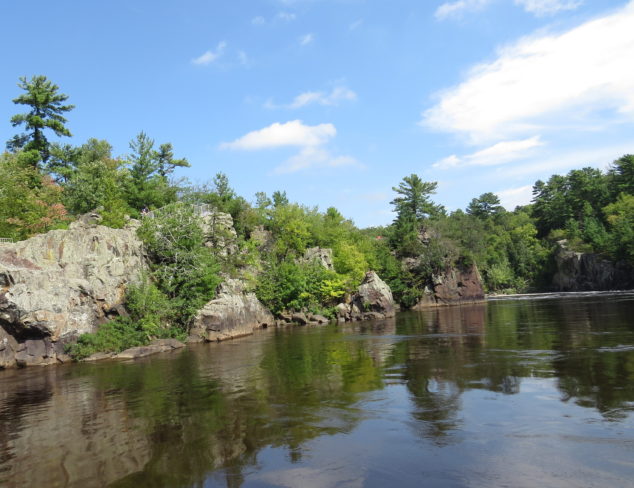
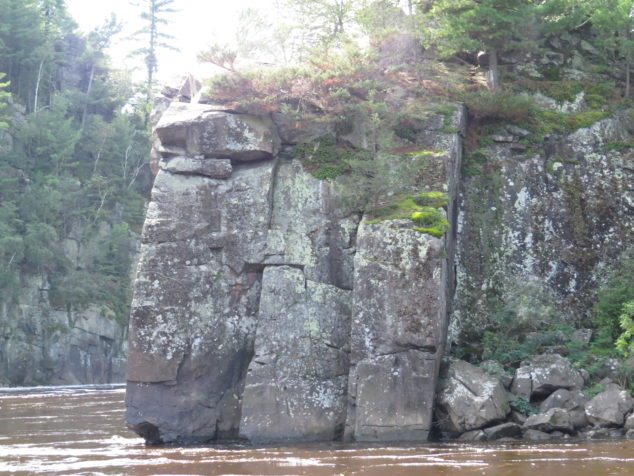
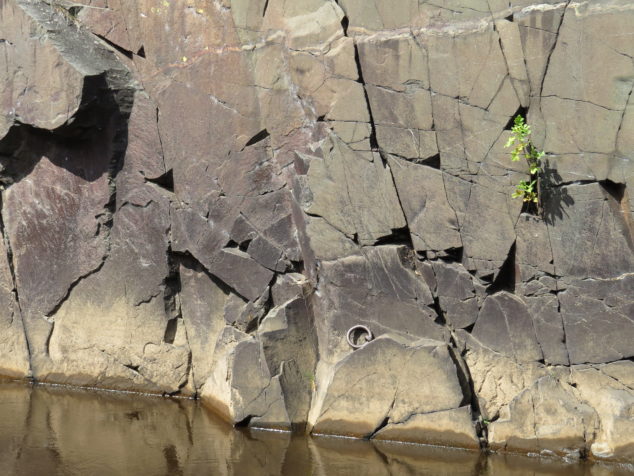
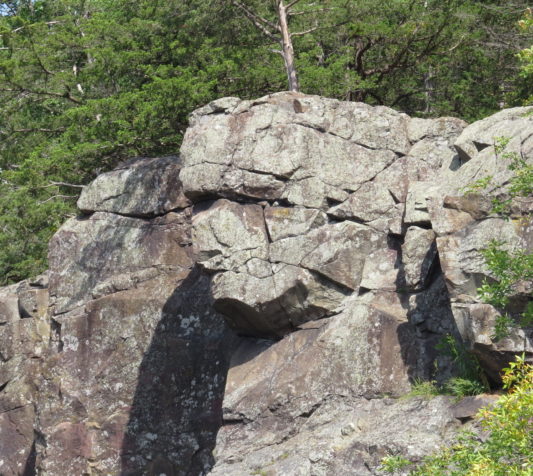
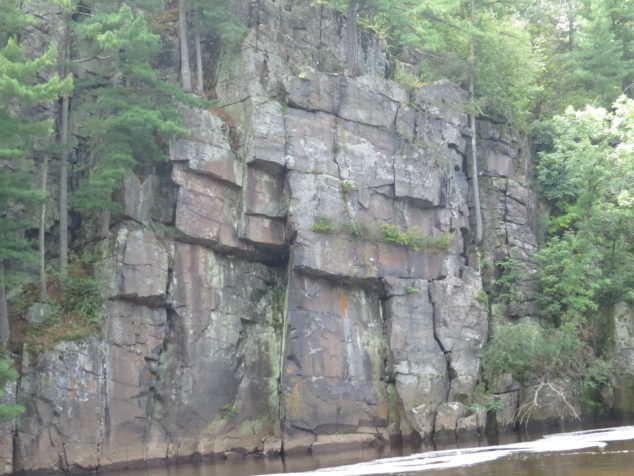
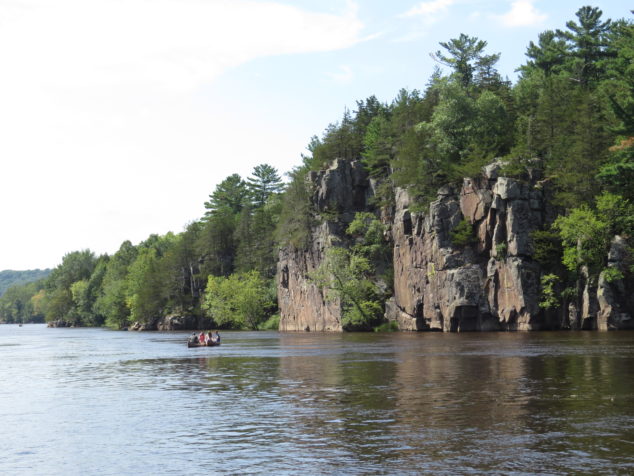
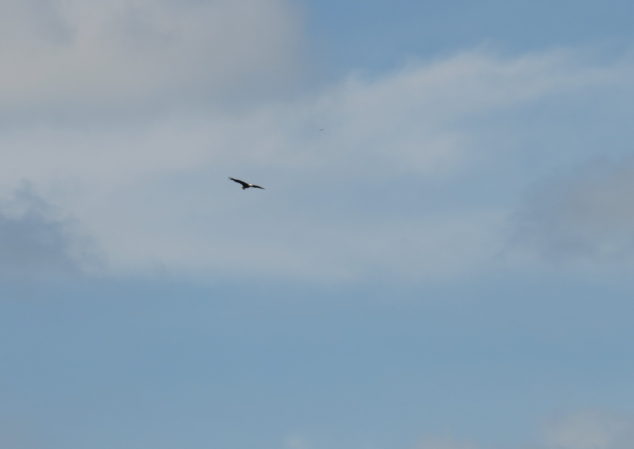
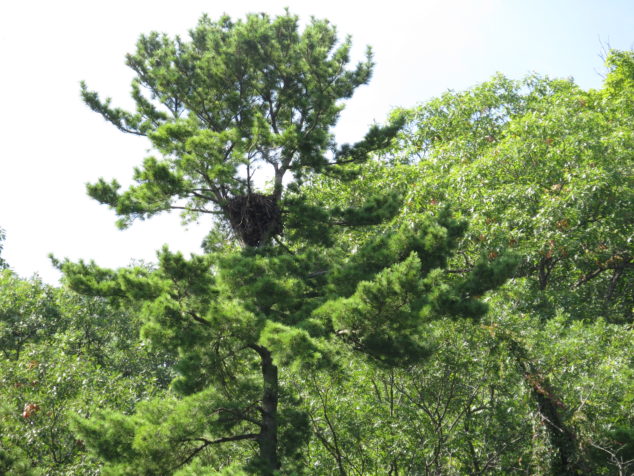
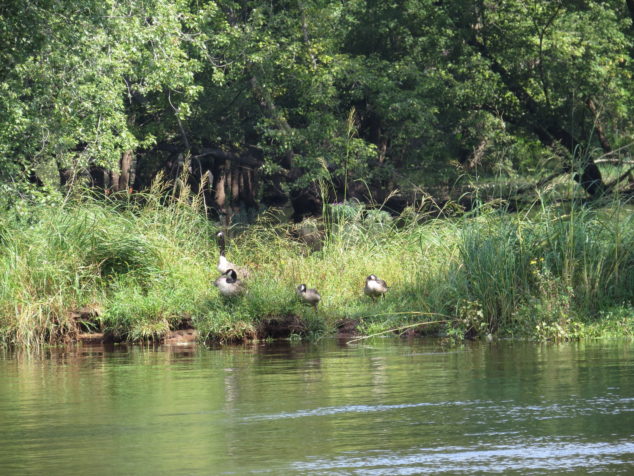
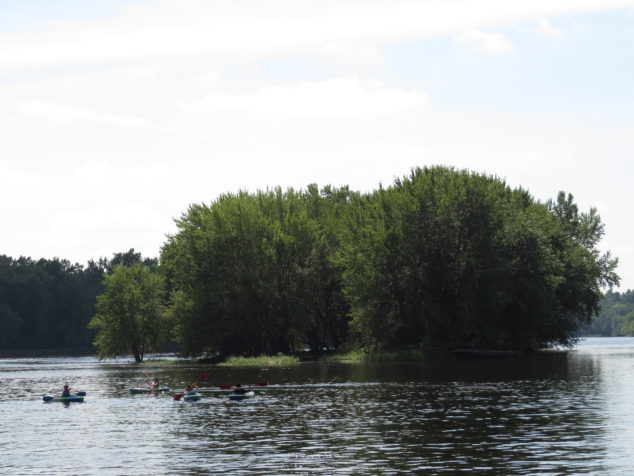
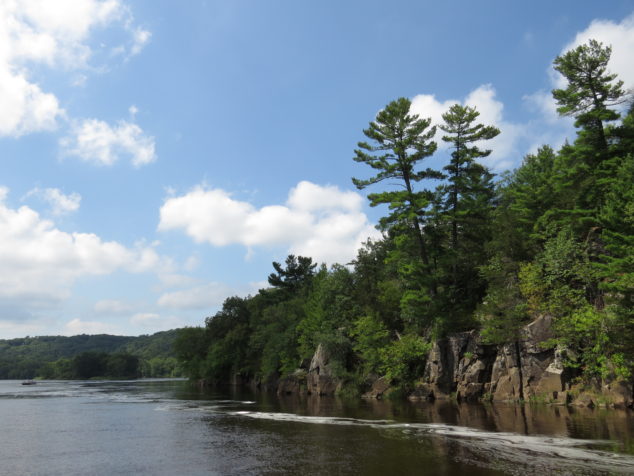
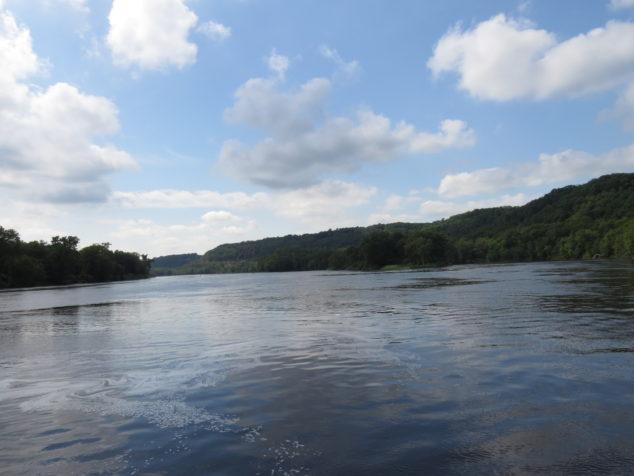
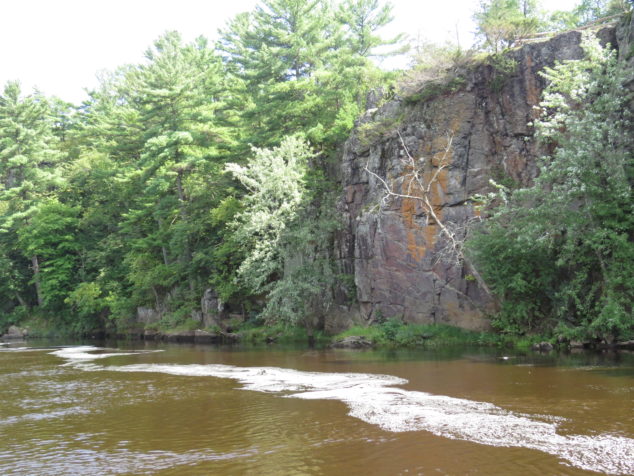
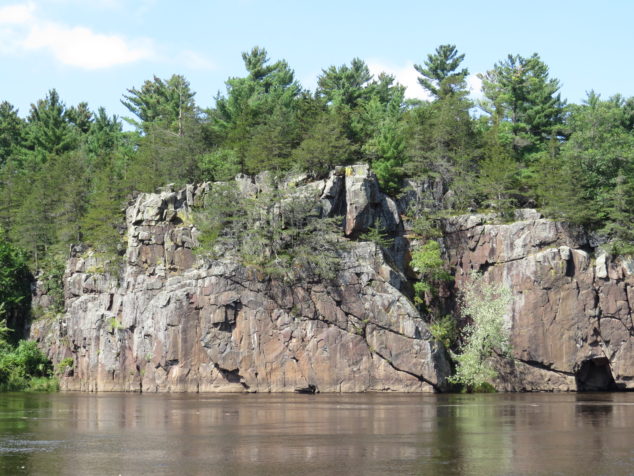
Ah, a Saint Croix cliff hanger! (pun intended)
Good one, Mom!
Next time we’ll paddle ourselves!
Good idea!